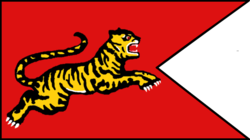Čólové (dynastie)
říše Čólů
| |||||||||
geografie
| |||||||||
starověcí Čólové: Púmpuhar, Urajur, Tiruvarur středověcí Čólové: Pazhaijárai, Taňčávúr, Gangaikonda Cholapuram | |||||||||
| obyvatelstvo | |||||||||
| státní útvar | |||||||||
vznik: | kolem 300 př. n. l. | ||||||||
zánik: | 1279 n. l. | ||||||||
| státní útvary a území | |||||||||
| |||||||||
Čólové byli jihoindickou tamilskou královskou dynastií. Svou moc si udrželi zhruba po třináct století.
Historie
První zmínky o jejich rostoucí moci pocházejí z 2. století př. n. l. První historicky doložitelný stát spravovali mezi 1.–6. stoletím n. l. V 9. století se stali vazaly Pallavů. V roce 898 však Čóla Áditja I. (871–907) Pallavy porazil a zbavil se vazalství. Za vlády Rádžarádži I. a Rádžéndry I. Čólava, tedy v 10. až 11. století, dynastie Čólů dobyla téměř celou jižní Indii, Maledivy a Srí Lanku. Klíčovou byla porážka Pándjů v roce 910. V roce 1070 dosáhli Čólové sjednocení své říše s královstvím Východních Čálukjů. Roku 1025 nakrátko dobyli Srívidžaju, načas vládli také v Uríse a Bengálsku. Největšího kulturního a hospodářského rozkvětu jejich říše zažila v 10.–12. století. Od 2. poloviny 12. století se stát ocitl v problémech, ve 13. století se Čólové stali vazaly státu Hójašálů. Dynastie ovšem nezanikla a mezi 14.-18. stoletím se čas od času někde chopila lokální moci, například v knížectvích Ándhra a Tamilnádu.[1]
Odkazy
Reference
- ↑ Čólové, jihoindická dynastie - CoJeCo.cz - Vaše encyklopedie. www.cojeco.cz [online]. [cit. 2017-03-17]. Dostupné online.
Externí odkazy
 Obrázky, zvuky či videa k tématu Čólové na Wikimedia Commons
Obrázky, zvuky či videa k tématu Čólové na Wikimedia Commons - Heslo v Britannice (anglicky)
Média použitá na této stránce
Autor: Vatasura, Licence: CC BY-SA 3.0
This picture shows the flag of the Chola kingdom. The flag of the Cholas was jumping tiger (Tamil: பாயும் புலி) according to the Periya Puranam. There is no official image of the Chola flag. This picture should help to imagine and reconstruct the Chola flag. The flag contains traditional Tamil colors, red, yellow, black and white.
This is not the official Chola flag, but a modern imagination of what the flag used by Cholas would look like. It has no historical background (no historical information on the shade or hue of the color, the angle of lines, the curvature or straightness of lines, etc). No flag artifact or any archaeological proof of a flag used by Cholas survived.
Autor: Jayarathina, Licence: CC BY-SA 3.0
Twin fish flag of Pandya Dynasty.
This is not the official Pandya flag, but a modern imagination of what the flag used by Pandyas would look like. It has no historical background (no historical information on the shade or hue of the color, the angle of lines, the curvature or straightness of lines, etc). No flag artifact or any archaeological proof of a flag used by Pandyas survived.
The flag believed to have been used by Sri Lankan king Dutthagamani and subsequent monarchs.
Autor:
- Rajendra_map_new.png: Původně soubor načetl Venu62 na projektu Wikipedie v jazyce angličtina
- derivative work: Gregors (talk)
Map showing the extent of the Chola empire during Rajendra Chola I (c. 1030 CE)
Autor: Vatasura, Licence: CC BY-SA 4.0
This picture shows an illustration of the Nandi flag of Jaffna kingdom. This flag was created based on Nandi symbol portrayed on Sethu coin.
 .
.This is not the official Jaffna flag, but a modern imagination of what the flag used by Jaffna would look like. It has no historical background (no historical information on the shade or hue of the color, the angle of lines, the curvature or straightness of lines, etc). No flag artifact or any archaeological proof of a flag used by Jaffna survived.






